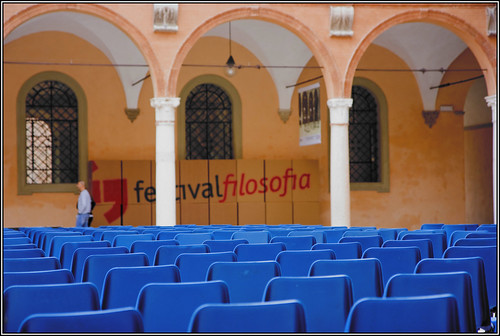The Meeting Space Should Not Define The Use, The Behavior Should

Most conferences look and feel the same.
Each session room is set theater style. Chairs are positioned one by one in neatly arranged rows. They all face the front of the room with a stage and screen.
The conference organizers’ identify and beliefs are reflected with how they view, value and design space. It also reflects their concepts about education and learning.
Changing Concept Of Meeting Space
Our conference audiences are much more sophisticated than ten years ago. We used to go to conference to get information. Now we can source information with the click of the mouse.
Today most people attend a conference for the experience. They want to experience education and networking. It’s about their personal learning and making new connections.
Yet most of our meeting spaces are still designed for efficient delivery of information to consumers–our attendees. It is not designed so that our attendees can be participants and connectors.
Our concept of conference space is changing. It’s changing based on the behaviors of what our attendees, now participants, want to do.
We need to look more at flow, proxemics and kinesiology.
Flow
The flow of the conference is how each individual event is linked to another in the meeting space. It’s about how groups move from one space to another. It also refers to the mental state of the participants and how the experience connects and unfolds.
Proxemics
Proxemics refers to how our culture and society define the space needed between two people. It’s about the physical and personal territory. The physical territory looks at how the space is used. Personal territory is our individual comfort bubble of what feels safe between you and another person.
Kinesiology
Kinesiology refers to our body movement. Education sessions designed to transfer information from the speakers’ mouth to the listener’s notebook require little space for passive consumers. People are wedged into spaces like sardines in a can.
Effective adult learning techniques often require more space for people to get up and move around. For example they are involved with forming and un-forming small groups for discussion.
How Conference Organizers Plan For Space
Conference audiences respond to spaces based on motives. Motives drive what is important.
If organizers plan a conference around information, they look for efficient use of space with passive attendees. If they plan a conference around attendees as participants in their own learning, they design the space for effectiveness.
Some conference organizers value orderliness and a sense of one task at a time. Their use of space reflects the industrial revolution mindset. They are borrowing space just like workers in cubicles borrow space from owners and feel restrained in what they can do.
Some conference organizers value the ability for their participants to do multiple things at a time. Their use of space reflects today’s networking culture. They challenge conventional use of space and propel a different conference community narrative. Their use of space is shaped by engagement.
Ultimately, our aspirations to move conferences forward into community narrative experiences that connect means we have to expand our own vocabulary and think of participant behaviors. We have to design space differently.
How do different traditional conference session layouts–theater, classroom, rounds, chevron–affect your expectations of the experience? What kind of conference spaces do you aspire to achieve?


[…] The Meeting Space Should Not Define The Use, The Behavior Should Source: velvetchainsaw.com […]
[…] The Meeting Space Should Not Define The Use, The Behavior Should Most conferences look and feel the same. Each session room is set theater style. Chairs are positioned one by one in neatly arranged rows. They all face the front of the room with a stage and screen. Source: velvetchainsaw.com […]
If there was one principle to describe this excellent insight it would be “People will act like they look.” I’ve seen executives lined up in throne-like chairs like the Supreme Court on a platform at least four feet above the employee audience all in the effort to encourage…more communication and teamwork!
One other thing to throw into this mix (since it is a rare facility designed for anything but banquets) is the role of sacred geometry. As we all know, though tend to ignore, everything is energy and so broadcasts frequency. That includes space. Ratios and dimensions have a greater impact than we know.
[…] Blog Jeff Hurt: The Meeting Space Should Not Define The Use, The Behavior Should Source: velvetchainsaw.com […]
[…] Meeting space should not define use! […]
Yes, I completely agree that meeting room should define the use so you should choose the room according to your requirement. Suppose if you required more space and you are not going to give video presentation then there is no need of DVD but more space with seating arrangement is required so choose wisely.